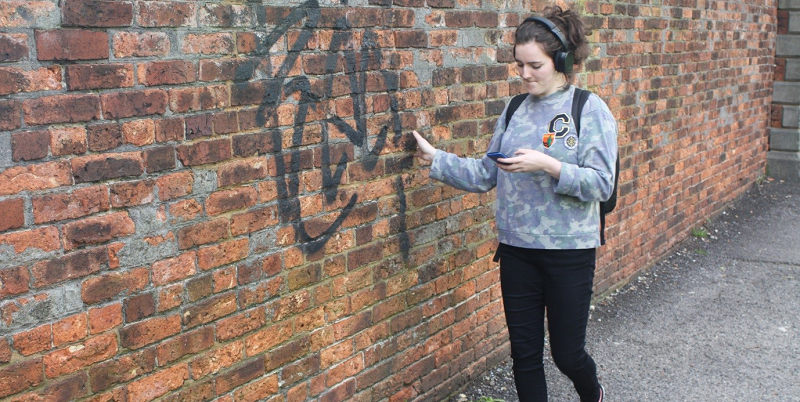Feel/Hear/See/Do
 The work with text predominantly explored text messaging and crystallised in an exercise called Feel/Hear/See/Do. The same title was then used for an interactive walk we developed as part of the Leeds Digital Festival.
The work with text predominantly explored text messaging and crystallised in an exercise called Feel/Hear/See/Do. The same title was then used for an interactive walk we developed as part of the Leeds Digital Festival.
The exercise was originally based on Intuittweet, a project developed by choreographer Susan Kozel, with Mia Keinanen and Leena Rouhiainen. The members of the group, located in different geographical places, exchanged messages on Twitter describing movements or kinaesthetic sensations they experienced throughout the day. In response to a message from one member of the group, the other two would improvise and send a message back.
As we did not use Twitter, but text messaging, the exercise was adapted for pair work. Each partner was positioned at a different place on the University campus and following a kinaesthetic sensation or event in the space they found themselves in, had to compose a text and send it to their partner. The partners had then to work with the text through movement and send a text back capturing their response.
After an initial free play, the exercise was further structured around the senses, following a progression from sensing to doing, which served two aims. The first aim was to ensure that the action culminating the exercise was a result of and/or in tune with an enhanced sensory perception that included the person doing the exercise, the absent partner, other people that happened to be physically present, and the surrounding environment. This progression also marked a trajectory from instructions that would be considered 'safer' - since an engagement with the initial invitations to 'Feel' and 'Hear' would not draw attention to the doer - towards instructions that could entail visible movement. So the aim was that by the time the participants were invited to perform an action, they were already involved in a sensory trajectory that progressed from sensing, which remained fairly internal and invisible to an external observer, towards a doing, that was visible and could attract attention.
The exercise can be helpful in a number of ways. It can sensitise students to outdoor or indoor environments and thus it can be a means of preparation for site specific work. It asks students to communicate sensory experience, in a fairly quick, immediate and brief manner and thus it may facilitate the development of a vocabulary that captures and articulates their somatic experience. Accordingly, it offers an alternative way of working with text and can develop their skills in creative writing. A variation, for example, of this exercise, would be to ask students to work with the writing they find in public places and use it as a starting point for creating movement and text.
Instructions for this task can be found in Exercises
